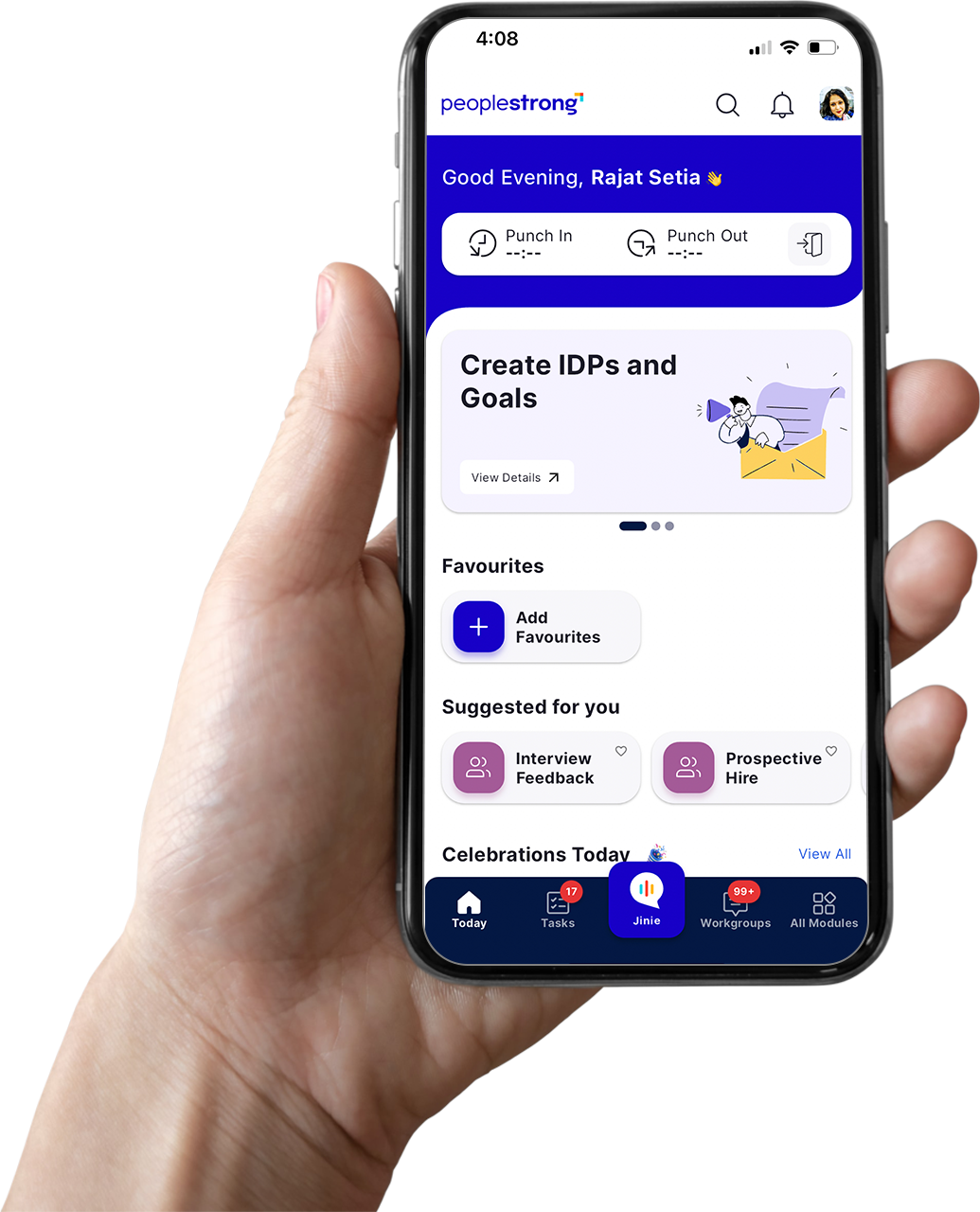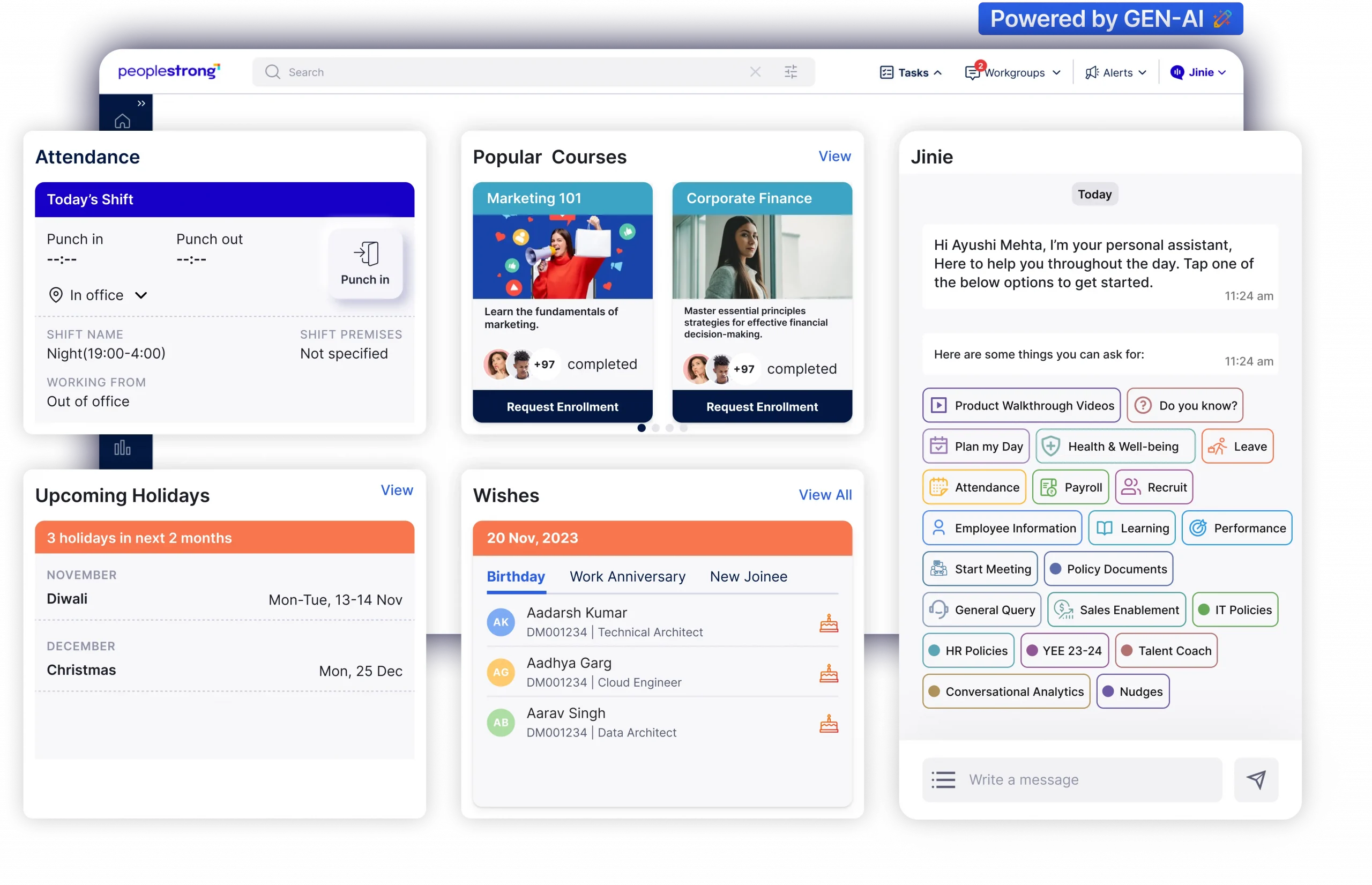Most organizations and HR professionals focus their attention on inculcating strong values and work ethics in the entire team. But despite having the best company culture or workplace ethics, there is one thing that can derail all your efforts: toxic employees.
Managing a team is hard. But managing toxic employees? That’s a whole different ball game.
Ignoring it doesn’t make it go away. Instead, it lets the rot spread, slowly eroding trust, productivity, and the excellent culture that you have been building over the years.
A single toxic employee can not just impact your team’s overall productivity and efficiency; it also has other detrimental outcomes. Research by Cornerstone Group indicates that 54% of your good employees are likely to quit when they have a toxic employee on their team, and this can cost the company three times more in hiring fees.
So, isn’t it easy to fire this toxic employee? Or do you first provide feedback and try to rectify this behavior before taking the final step?
This blog dives into exactly how to manage toxic employees and identify these toxic patterns early on so that you can protect your teams from this toxicity before it spreads and does more damage.
What is a Toxic Employee?
Defining a toxic employee goes beyond a simple label. A toxic employee is not an individual or group, but someone who consistently exhibits negative behavioral patterns and attitudes. It is someone whose actions and attitudes consistently harm the organization’s culture, people, or performance.
But how do we know if someone is a toxic employee or not? Everyone has off days, when our productivity can be low or our behavior at work can be off. But with toxic employees, this is not just a rough patch.
Toxic behavior differs from periodic misconduct, which is one-time or occasional. Toxic behavior is chronic and harmful. It may take many different forms, such as:
1. The Bully
A bully is someone who uses intimidation, aggression, or manipulation to control others. They tend to feed off power dynamics, especially against those perceived as less influential or weaker.
Bullies often hide their toxic behavior, cleverly concealed behind strong performance that exceeds expectations. However, their actions can create a hostile work environment for those around them and lead to negativity.
2. The Gossiper
One of the easiest ways to undermine the company’s values and structure is by spreading rumors and engaging in back-channel conversations. This behavior erodes trust and fosters a divisive environment, often leading to misunderstandings and internal conflicts.
The gossip feeds on drama and the “insider” status of being “in the know,” relying on information as a tool for perceived social power.
3. The Passive-Aggressive
This type of toxic employee is often the most difficult to identify.
Instead of addressing issues directly, the passive-aggressive employee expresses dissatisfaction through indirect means, such as missed deadlines, sarcasm, or subtle resistance.
This behavior is particularly insidious because it’s hard to pin down, leaving colleagues frustrated and confused about how to react.
4. The Narcissist
Self-absorbed and frequently grandiose, the narcissist craves constant praise and provides little empathy to others. The narcissist feels superior and, in general, takes credit for other people’s work or blames others for his or her mistakes.
Narcissists are likely to downplay criticism given by other members of the team, including high-ranking team members, which may prevent team collaboration and innovation. This affects not only team dynamics in general but also personal performance since other team members feel they are not permitted to contribute adequately to the organization.
5. The Victim
Always presenting themselves as helpless or victimized, victims always shirk responsibility and attribute their failures to external forces or others. Their persistent complaining can suck team energy and concentration.
Worse, they also perpetuate a toxic team culture, as their own failings are often blamed on the organization’s processes, culture, and work dynamics. This can also perpetuate a culture of helplessness, where it becomes hard for the team to progress or fight problems head-on.
6. The Slacker
Any team has some members who perform way beyond expectations, while others do not quite measure up to the set expectations. This is only to be expected.
But slackers are not like that. They repeatedly underachieve and expect others to cover for them. Their lack of responsibility and initiative can lead to resentment in high-performing colleagues, who feel their good work is exploited.
7. The Micromanager
Obsessed with control, a micromanager is someone who wants to know everything and constantly requests updates. They hold themselves to high accountability for meeting deadlines or achieving a particular quality metric within the organization, but their approach can lead to toxicity.
The constant fixation on being in control and needing updates can demoralize other team members, often leading to a decline in morale and creativity. Their lack of trust can also hinder team development, as they feel that no one else meets their high standards.
How to Spot a Toxic Employee?
Toxicity rarely shows up in bold letters on someone’s resume. Instead, it leaves a trail that HR and the leadership need to identify before things spiral and impact the entire organization.
The challenge? Toxic employees often operate under the radar, particularly in hybrid or remote work environments. To identify these toxic patterns, you need to take up proactive identification measures, and look at the subtle signs like:
Constant Negativity or Complaining
Toxic employees are always unhappy. Whether it’s a new policy, team decision, or even free snacks, they’ll find something wrong with it. This kind of chronic complaining slowly infects team morale and turns work culture sour.
According to Gallup Research, if companies focus on identifying these toxic patterns and prioritizing employee engagement, it could lead to a 9% increase in global GDP. Global employee engagement has declined over the years, falling two points to 21% in 2024.
Undermining Colleagues or Leadership
Toxic workers commonly practice subtle or blatant behavior of undermining their coworkers or leadership. They might throw their colleagues under the bus, speak over others in meetings, or covertly challenge leadership decisions.
Sometimes, it can be a genuine response. But when done repeatedly, it wears away trust and develops a culture of suspicion, making actual collaboration impossible.
Poor Communication and Collaboration
A toxic employee often struggles with or actively avoids effective communication and collaboration. They might withhold critical information, refuse to share workload, or actively resist working in teams.
Although some team members lack this soft skill and need encouragement to work effectively in teams and communicate, toxic employees often refuse to change. This lack of teamwork significantly impacts collective goals and can lead to the creation of silos.
Disrespectful or Disruptive Behavior
If an employee is constantly found making rude comments, passing sarcastic remarks on someone’s work or input, or exhibiting dismissive body language such as outright yelling or aggressive outbursts, these are clear signs of toxicity.
These actions show a fundamental lack of respect for colleagues and the professional environment, making others uncomfortable and less productive.
Manipulative Tactics or Gossip
Some toxic employees manipulate others to get what they want, often at the expense of others. This may involve playing one’s peers against each other, pretending to be sick to avoid work, or fabricating stories to garner sympathy or shift blame.
Low Accountability, High Blame
Toxic employees do not own their failures. They push blame, make excuses, or gaslight others into doubting what they themselves did.
The Cost of Ignoring Toxic Employees
Despite telltale signs of workplace toxicity, organizations often turn a blind eye to the issue. They hope it may resolve itself. But turning a blind eye to toxic behavior doesn’t make you a tolerant leader, it makes you complicit.
And the costs? As per Hogan Assessments, 6% of the global workforce exhibits these toxic patterns, and avoiding toxic hires could save the economy $292 billion per year.
But that’s not all! Toxic employees can also lead to:
- Reduced Team Morale and Productivity: A single toxic employee can derail your entire team’s morale and output. When employees spend most of their energy navigating interpersonal drama instead of focusing on their work, productivity inevitably plummets.
- Increased Absenteeism and Burnout: Working with a toxic colleague can lead to chronic stress. Employees may start calling in sick more frequently and report higher levels of stress in the workplace. Over time, this can lead to burnout, resentment, and quiet quitting.
- High Employee Turnover: According to the 2023 SHRM report, 32.4% of employees quit their jobs due to toxic employees and negative work culture. This is because top performers are often unwilling to work in a toxic environment and prefer to leave rather than try to change this culture.
- Damage to the Employer Brand: Good employees don’t just leave, they take knowledge, trust, and momentum with them. Worse, they will also warn others against joining the organization, especially on platforms like Glassdoor and LinkedIn, among others.
- Impact on Customer/Client Experience: Toxicity isn’t just limited to the workplace; it even trickles down to impact customer and client experiences. Employees burdened by internal stress and negatively affected are less likely to prioritize customer experience, leading to sloppy work, missed deadlines, and even rude behavior with customers.
How to Manage Toxic Employees: Step-by-Step Approach
Dealing with toxic employees is one of the toughest leadership challenges. It is not as easy as just terminating the toxic employee. It requires patience, careful documentation, and persistent follow-up.
Here is a step-by-step guide to help you understand exactly what actions you should be taking to manage toxic employees:
Step 1: Identify and Document the Behavior
The first thing you should do when you identify a toxic pattern or an early indication is to start documenting it. The early signs can include passive-aggressive comments, sarcastic remarks, consistent negativity, or undermining a coworker.
Start documenting this behavior the minute they spot a red flag, so that you can provide pointed suggestions to the toxic employee.
For example, if you noticed a particular toxic incident, record the date, time, and specific behaviour that you observed. This could be something like “On May 28, 2025, at 10:30 AM, [Employee Name] publicly scoffed at [Colleague’s Name]’s idea during the team meeting.”
You can also include the context and setting in which it occurred, as well as the impact it could have had on the employee and the overall team morale. This detailed record will be vital when discussing the toxic employee and taking disciplinary actions if necessary.
Suggested Read:
26 Essential HR Policies Every Organization Needs
Step 2: Address the Issue Promptly but Privately
Once a pattern of problematic behavior is established, take prompt and decisive action.
We recommend scheduling a private meeting with the employee so that they do not feel attacked. During the discussion, refer directly to your documented observations.
The objective of this meeting is to ensure that the toxic employee realizes how their actions or behavior are impacting the organization and overall work culture. Remember to be respectful and non-confrontational during this conversation, as we need to help the employee realize their mistake and find a constructive path ahead.
Step 3: Listen and Try to Understand the Root Cause
An important aspect of solving the problem is identifying why the behavior is taking place. There could be hidden reasons you do not know about.
Practice active listening and let the employee explain their side, and look for underlying issues like personal problems, misunderstandings, or a lack of information that can be causing the behavior. Knowing the root cause is important in deciding the right next step or intervention, if needed.
In most instances, toxic workers might not realize their actions and the extent of their impact, so this step has to be done carefully.
Step 4: Set Clear Expectations and Boundaries
After hearing the toxic worker, give constructive and clear feedback in order to promote any improvement in their behavior.
For instance, “I need you to desist from making sarcastic comments during team meetings,” or “I have noticed that you always shy away from considering a specific employee’s input, as seen on [precise date and time].” Let the employee know in straightforward language that you are monitoring their actions and will be recording it to ensure they talk the walk.
You can even start a Performance Improvement Plan (PIP) with quantifiable objectives and a dedicated time frame, giving the employee the opportunity to work through their behavioral problems.
Pro Tip: Employees with quarterly goal progress reviews are 90% more likely to be engaged and 2.1 times as likely to feel the process is fair.
Step 5: Provide Support and Resources
Provide resources to help the employee change as needed. This might involve coaching, training courses, mentoring, or the ability to access employee assistance programs (EAPs). If the problem is rooted in a conflict between role or responsibilities, think about restructuring their job function so that it is more suited to their strengths.
Step 6: Follow Up and Monitor Progress
Enforce the use of periodic check-ins on 30, 60, and 90-day cycles to monitor progress. 30-day timelines are most suitable for critical problems and band-aid solutions, while a more extended 60-90 day timeline will work well for intricately complicated issues, including altering habitual behavior or upskilling.
These check-ins offer the chance for positive reinforcement if improvement is noted, or for dealing with problems that continue, and refining the plan as needed. You should even solicit feedback from others, including other managers and colleagues, to obtain an overall picture of any changes.
Step 7: Escalate When Necessary
If there is no improvement due to support and clear expectations, then it is time to use the organization’s disciplinary processes. Engage the leadership team, HR leaders, and legal counsel (if necessary) so that any action taken is fair, compliant, and well-documented.
Escalations can often mean written warnings or dismissal, depending on the level of seriousness and frequency of the conduct. The aim is to solve the matter effectively while safeguarding the organization and its workers.
Suggested Read:
6 Sample Warning Letters to Employees for Misconduct
HR’s Role in Managing Toxic Behavior
Toxic employees are not a “manager problem”; it is primarily an HR risk. The HR department is directly accountable for culture, compliance, and people operations; any behavior that goes against these responsibilities should be taken care of without delay.
HR can collaborate with managers and other departments to give feedback and assistance that is relevant. This includes:
- Assisting managers with tools and training: Few managers receive training in managing people and might require assistance from HR to recognize, record, and respond to toxic behavior. You can develop structured toolkits to guide managers through difficult conversations, performance improvement plans (PIPs), and escalation procedures, ensuring a response that is confident and consistent, rather than reactive.
- Offer feedback as an objective third party: At times, toxicity is situational, or even mutual. That’s where HR can come in as a neutral third party to intervene in complicated interpersonal relationships. Through formal mediation sessions or anonymous feedback systems, HR can reveal truths that may be buried under the weight of politics or fear.
- Maintain proper documentation and legal preparedness: Finally, toxic behavior can result in tough and tough choices. When those choices include formal warnings or departures, HR has to be certain that everything is legally in order. Thorough documentation, a just escalation trail, and compliance guidelines safeguard not only the firm but also its culture from turning into a toxic culture itself.
HR platforms these days can do a lot to document and identify toxic behavior in the workplace. PeopleStrong’s integrated HRMS Software can be utilized for employee engagement tracking, anonymous pulse surveys, and feedback mechanisms. These are insightful into team morale, highlight possible areas of dissatisfaction, and provide a secure medium for employees to raise concerns without fear of harassment.
When and How to Let a Toxic Employee Go
Letting go of a toxic employee is never easy. But sometimes, it’s necessary—not just for the health of the team, but for the integrity of the organization.
If an employee has gone through clear feedback loops, coaching, support, and structured performance improvement plans, and there’s still no meaningful change, then it’s time to let them go.
You can use a simple employee exit policy template for this purpose. This process should include:
- Clear documentation of all the incidents, interventions, evaluations, and actions that the company took.
- Neutral meetings and communication of the decision, without any personal attacks or judgment about the toxic employee’s character. As HR, you need to clearly communicate the legal requirements for notice, final pay, benefits, any severance agreement, and execute the offboarding strategy efficiently.
- After the termination of the toxic employee, it is essential to communicate to the wider team how the company upholds its values and prioritizes team health, without placing blame on any individual. Maintain transparency, but without overstepping the confidentiality of the exiting employee.
Manage Toxic Behavior With Proper Planning & Strategy
Toxic behavior is not a temporary issue that will go away on its own. It often manifests silently, destroying team morale, productivity, and, ultimately, the bottom line of the company.
HR and people managers must work hand-in-hand to spot toxicity early, address it with empathy, and take decisive steps to protect the broader team. Modern HR technology, like PeopleStrong’s platform, plays a pivotal role in this journey. They can help you in every step of the talent management journey, from carefully documenting feedback to having strategic conversations, ensuring that your organization can protect the needs of the larger team and prevent toxicity from manifesting in the first place.
Ready to make your workplace a center of excellence and positivity? Schedule a demo today and learn how our full-stack HR tech platform can enable superior workplace behavior management and employee engagement to craft an exceptional workforce.













